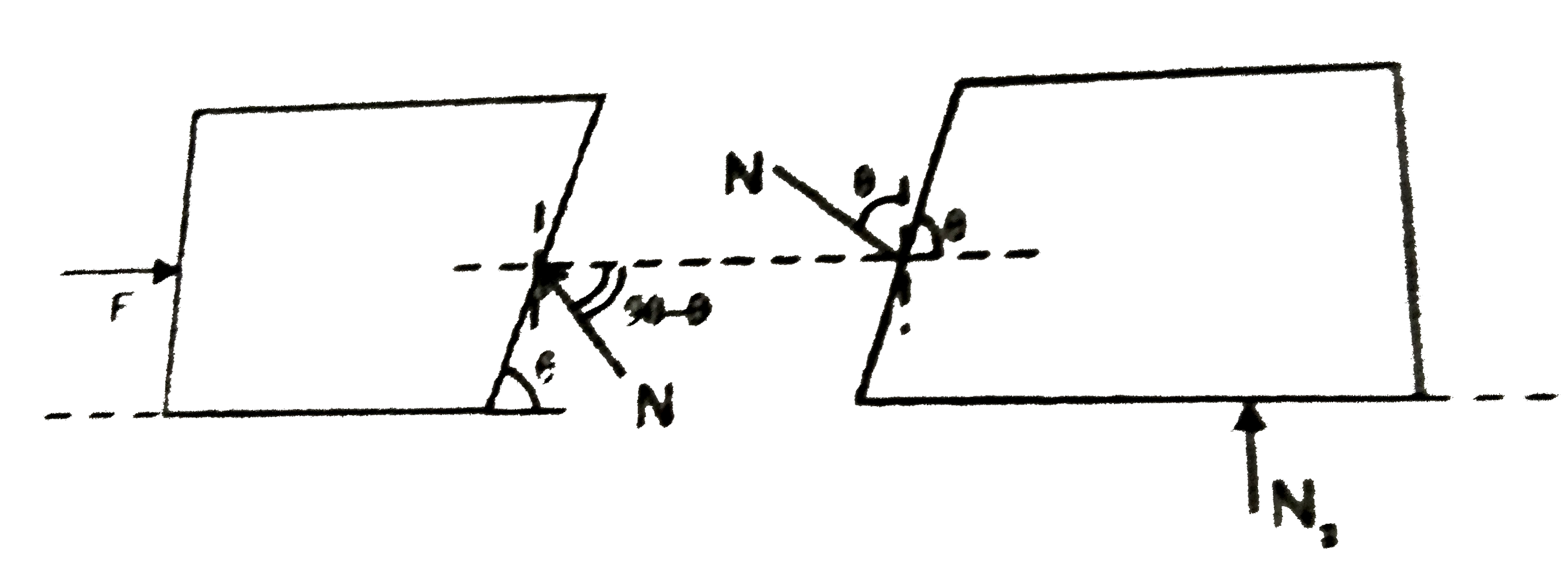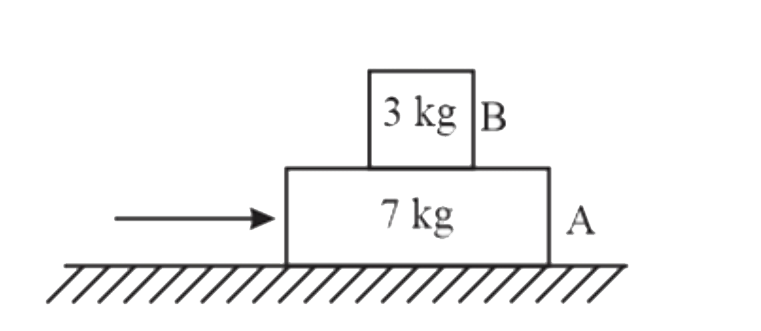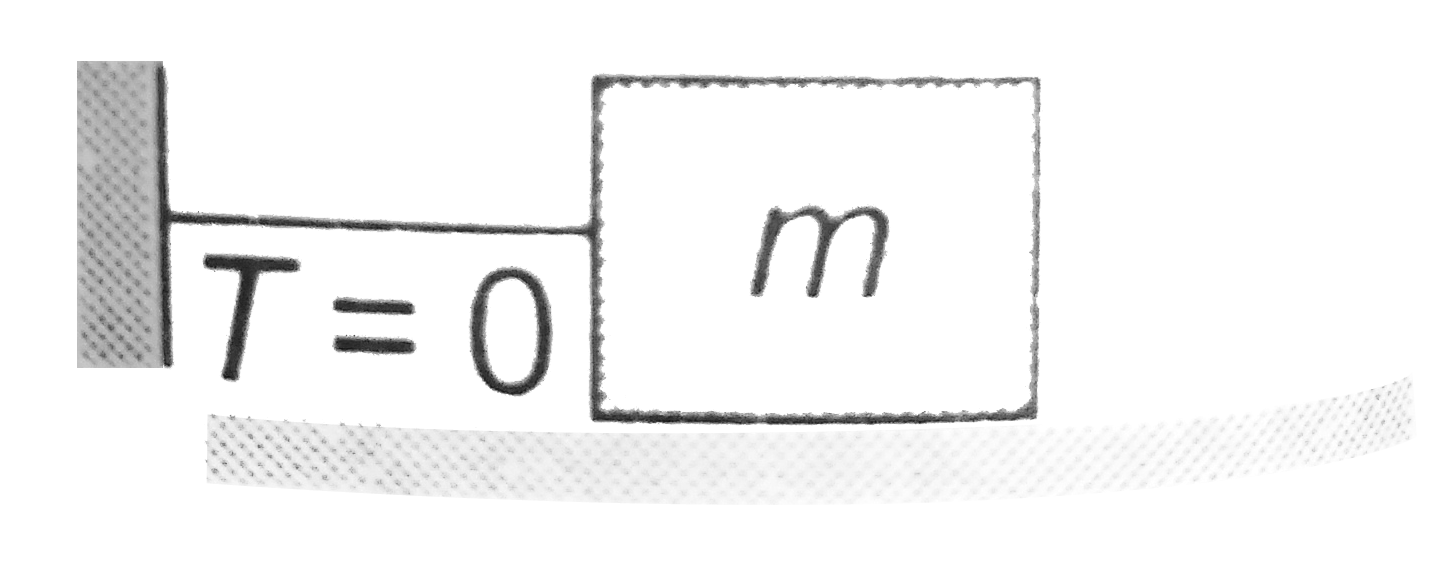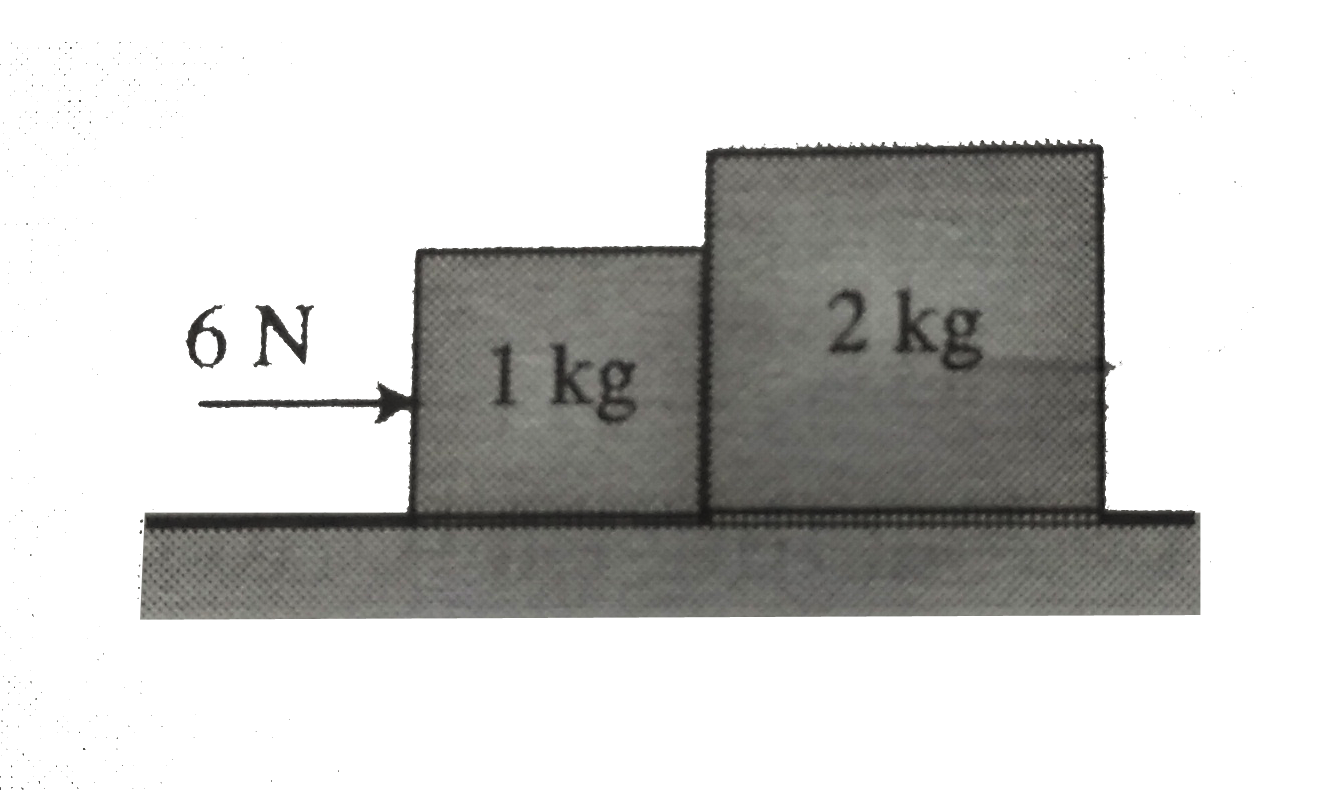Two blocks A and B are placed in contace on a horizontal surface. Faces of block A and B, which are in contact , are inclined at 30∘ with the horizontal, as shown. There is no friction between block A and any surface which is in contact with this whereas friction coefficient between block B and the surface is 1√3. A force F is applied in horizontal direction on block A. What is the minimum value of F at which the block B just start moving rightwards ?

40√3N
80√3N
100N
For any value of F, motion will not start
The correct Answer is:D
F=Nsinθ,N=Fsinθ
Nsinθ=μ(Ncosθ+mg)
F=μ(Fcotθ+mg)
F(1−μcotθ)=μmg
F=μmg1−μcotθ

On putting μ=1√3 and θ=30∘□
μ=1√3θ=30∘
F=∞
Therefore motion will not start for any value of F.
Topper's Solved these Questions
- DAILY PRACTICE PROBLEMSBook:RESONANCEChapter:DAILY PRACTICE PROBLEMSExercise:dpp 32
Explore 8 Videos
- DAILY PRACTICE PROBLEMSBook:RESONANCEChapter:DAILY PRACTICE PROBLEMSExercise:dpp 33
Explore 8 Videos
- DAILY PRACTICE PROBLEMSBook:RESONANCEChapter:DAILY PRACTICE PROBLEMSExercise:Comprehension
Explore 127 Videos
- CURRENT ELECTRICITYBook:RESONANCEChapter:CURRENT ELECTRICITYExercise:Exercise
Explore 54 Videos
- ELASTICITY AND VISCOCITYBook:RESONANCEChapter:ELASTICITY AND VISCOCITYExercise:Advanced Level Problems
Explore 9 Videos
Similar Questions
A block of mass 10 kg is sliding on a surface inclined at 30∘ with horizontal . If coefficient of friction between the block and the surface is 0.5 , find acceleration produced in the block . Take g=9.8m/2 .
View SolutionFriction coefficient between any two surface in contact is 0.5 pulleys and string aare frictioness .Find the friction between blocks A and B ( in newton)

View Solution
Knowledge Check
Two blocks A and B are placed one over the other on a smooth horizontal surface. The maximum horizontal force that can be applied on the lower block A, so that A and B move without separation is 49N. The coefficient of friction between A and B is (take g = 9.8ms−2 )
 A0.2B0.3C0.5D0.8
A0.2B0.3C0.5D0.8A block of weight 200N is pulled along a rough horizontal surface at constant speed by a force of 100N acting at an angle 30∘ above the horizontal. The coefficient of kinetic friction between the block and the surface is
A0.43B0.58C0.75D0.83A block of weight 200N is pulled along a rough horizontal surface at contant speed by a force of 100N acting at an angle 30∘ above the horizontal. The coefficient of kinetic friction between the block and the surface is .
A0.43B0.58C0.75D0.83
A block of mass m is stationary on a horizontal surface. It is connected with a string which has no tension. The coefficient of friction between the block and surface is m . Then , the frictional force between the block and surface is:

View SolutionA wooden block of mass M resting on a rough horizontal surface is pulled with a force F at an angle with the horizontal. If is the coefficient of kinetic friction between the block and the surface, then acceleration of the block is -
View SolutionTwo blocks A and B are lying on the table as shown in the figure. The coefficient of friciton between block A and block B is μ. The coefficient of friction between block B and ground also μ. An external force F is applied in the direction shown. The maximum value of the force F that can be applied without moving the blocks.

View SolutionA block is kept on a rough horizontal surface as shown. Its mass is 2 kg and coefficient of friction between block and surface (μ)=0.5. A horizontal force F is acting on the block. When

View SolutionTwo blocks of masses 1 kg and 2 kg are placed in contact on a smooth horizontal surface as shown in fig. A horizontal force of 6N is applied on a 1-kg block. Find the force of interaction of the blocks.

View Solution
